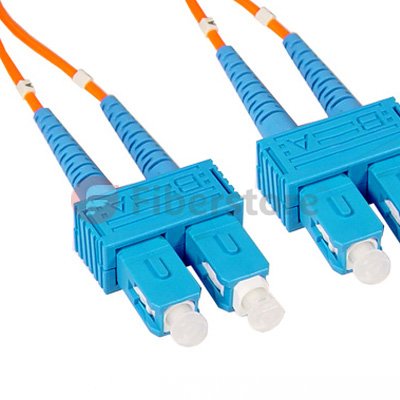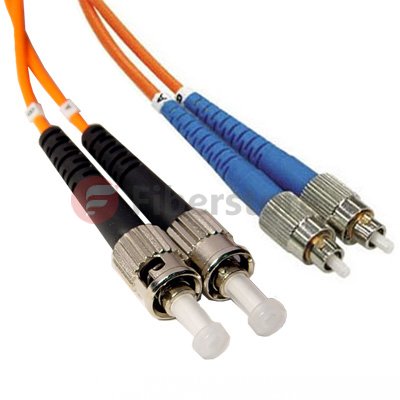Computer networks require complicated and specific cabling, particularly in business or academic settings. The cables used in cabling the networks must be made from certain materials. Backbone cabling and horizontal cabling are two main cabling methods used in today’s structured cabling system and neither is dispensable. In order to meet different connection needs, cables used in backbone cabling and horizontal cabling also have many differences from each other. So what’s the difference between them? Knowledge of backbone cabling and horizontal cabling will be introduced in this article.
Structured Cabling System Basics
To understand backbone cabling and horizontal cabling, let’s understand the six subsystems of structured cabling firstly. These six subsystems are often found throughout a building and are connected together so that various types of data can be transmitted consistently and securely (as shown in the figure below).

- Entrance Facility: This room is where both public and private network service cables communicate with the outside world.
- Equipment Room: A room with equipment that serves the users inside the building.
- Telecommunications Room: This room contains the telecommunications equipment that connects the backbone and horizontal cabling subsystems.
- Backbone Cabling: A system of cabling that connects the entrance facilities, equipment rooms, and telecommunications rooms.
- Horizontal Cabling: The system of cabling that connects telecommunications rooms to individual outlets or work areas on the floor.
- Work Area Components: These connect end-user equipment to outlets of the horizontal cabling system.
Backbone Cabling
The backbone cabling is also called vertical cabling or wiring. It provides interconnection between telecommunication rooms, equipment rooms, and entrance facilities. These backbone cablings typically are done from floor to floor to floor. When setting up backbone cabling, several types of media can be used: unshielded twisted-pair (UTP) cable, shielded twisted-pair (STP) cable, patch cord, or coaxial cable. Equipment should be connected by cables of no more than 30 meters (98 feet).

With the emerge of Gigabit Ethernet and 10 Gigabit Ethernet, fiber optic cable is the most appropriate choice for backbone cabling since they provide much higher bandwidth than traditional Cat5, Cat6 or even Cat7 twisted pair copper cables. Another advantage of fiber is that fibers can run much longer distance than copper cable, which makes them especially attractive for backbone cabling.
Horizontal Cabling
The horizontal cabling system extends from the work area’s telecommunications information outlet to the telecommunications room (TR) or telecommunications enclosure (TE). As shown in the figure below, horizontal cabling is usually installed in a star topology that connects each work area to the telecommunications room. It includes the telecommunications outlet, an optional consolidation point, horizontal cable, mechanical terminations and patch cords (or jumpers) located in the TR or TE.

Four-pair 100-ohm unshielded twisted-pair (UTP) cabling (Cat5 or Cat5e cabling) is usually recommended for new installations because it supports both voice and high-speed data transmission. To comply with EIA/TIA wiring standards, individual cables should be limited to 90 meters in length between the outlet in the work area and the patch panels in the telecommunications room. Patch cords for connecting the patch panel to hubs and switches in the telecommunications room should be no longer than 6 meters total distance. Cables connecting users’ computers to outlets should be limited to 3 meters in length.
Backbone Cabling vs Horizontal Cabling
Although the same types of cables are used for both backbone and horizontal cabling, since backbone cabling typically passes through from floor to floor, the cables used for backbone cabling have the very different requirement from the horizontal cablings. Backbone cables must meet particular fire-rating specifications, typically OFNR (Optical Fiber Non-Conductive Riser) rated. If the backbone cable passes through plenum area (spaces in the building used for air return in air conditioning), the cable must be OFNP (Optical Fiber Non-conductive Plenum) rated. Besides, since backbone cables need to have enough strength to support its own weight, cable strength for backbone cables is also different from horizontal cables. And unlike horizontal cables, backbone cables must be secured correctly.
Conclusion
As two important parts of structured cabling, both backbone cabling and horizontal cabling play an irreplaceable role. And due to the different cabling environment, backbone cables and horizontal cables may have different specifications. FS.COM provides both Cat5, Cat6 or Cat7 UTP or STP copper cables and OFNR or OFNP multimode or single-mode fiber patch cables for backbone cabling and horizontal cabling. For more information about the backbone cabling and horizontal cabling solutions or other cabling solutions, please contact us via sales@fs.com.
Source:http://www.fs.com/blog/


